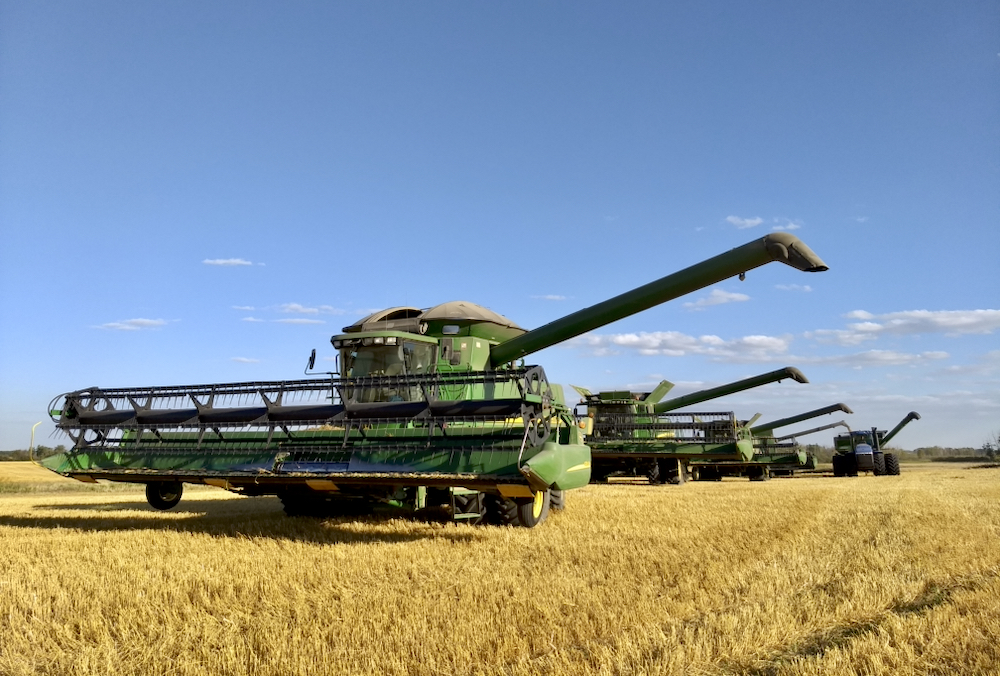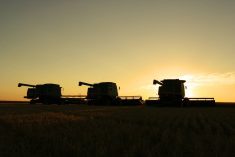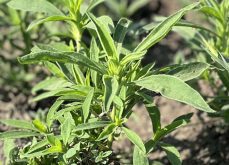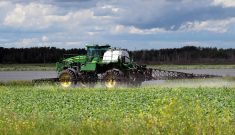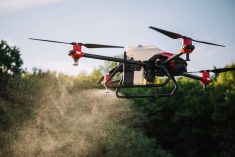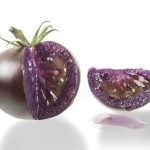After a dry 2021 growing season in most, but not all, parts of Western Canada, farmer panel members for our Jan. 18, 2022, issue of Grainews say they aren’t planning any crazy moves for the coming growing season. However, they will be making some adjustments in fertilizer application rates and crop rotations for 2022, while still playing it by ear as seeding season approaches.
The “normal” volatility of the agriculture industry raised lots of questions about the coming year. In some areas, fall and early-winter moisture were an encouraging end to 2021, but will there be enough moisture for 2022 or are we in for another record-breaking, hot, dry growing season? And as the new year began, those crazy but welcome commodity prices were still quite strong, but will that hold through ’til harvest?
On the other side of the ledger, input prices — fertilizer and chemical prices, for example — were through the roof in late 2021, with reports in some markets of 100 to 300 per cent increases over 2020 prices. Is there a chance those prices will moderate in the coming year? And, with worldwide transportation bottlenecks, what about supply disruption? Some popular inputs may not be available no matter what the price.
While there are a lot of questions before seed goes in the ground, farmers appear to be taking it in stride. Here is what our farmer panel members for January 2022 had to say about their plans for the coming growing season.
Russell Friesen
La Crete, Alta.

While Russell Friesen had a pretty good 2021 growing season on his northern Alberta Peace River- region farm, he doesn’t take last year’s timely moisture for granted.
“Traditionally, this area is pretty dry,” says Friesen, who along with family members farms near La Crete, Alta., about 320 kilometres north of the town of Peace River. “More often than not we are short of moisture. Last year, we had a decent crop. Overall yields were slightly above average. But I keep those dry growing conditions in the back of my mind.”
Friesen, who grows wheat, canola, peas, oats, flax and barley, says while above-average yields were welcomed in 2021, his planning will target average yields in 2022.
“Actually, with fertilizer prices so high, it would be great to cut back on fertilizer this coming year, but I know I’ve pretty well used up the nutrients in the soil, so I will plan fertility for an average yield,” he says. “And I’ll follow the usual rotation with no major changes in the acres of different crops. Over the years, when I’ve tried that, it usually works out that I zig when I should have zagged.
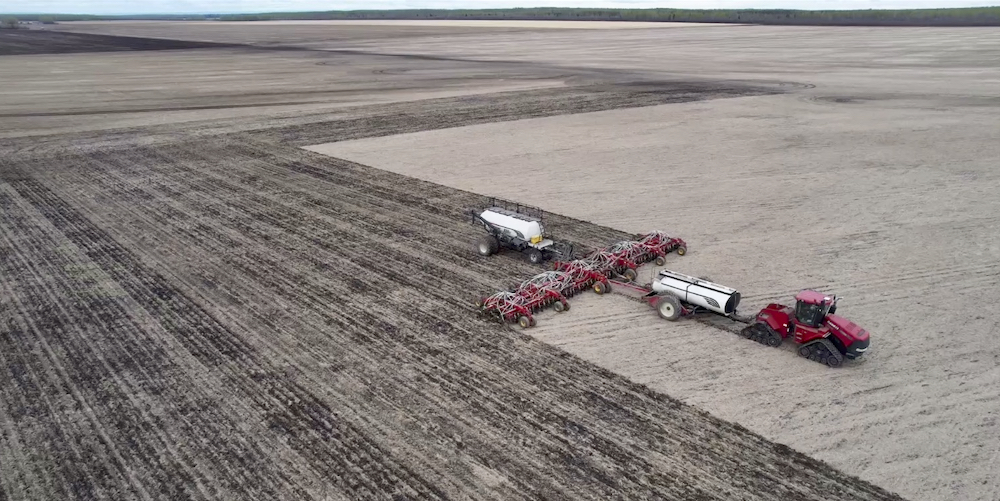
“Looking at our plans for 2022 — and it doesn’t appear there are any crop or marketing opportunities that really stand out — for the most part, it will just be steady as she goes this coming season,” he says.
Robert Semeniuk
Smoky Lake, Alta.

About 700 kilometres south of La Crete, near Smoky Lake, Alta., Robert Semeniuk says he might get some break on fertilizer application rates this coming growing season but knows it won’t totally compensate for the increase in fertilizer prices.
Semeniuk figures he may be able to cut back fertilizer rates by 10 to 15 per cent on his northeastern Alberta farm, but that won’t make much of a dent in the fertilizer bill as prices have increased close to 150 per cent.
“The soil test shows we have some increase in nutrient carryover for 2022,” says Semeniuk. “Last year was dry, but we did get a crop. It was below average but we did use some nutrients, so I don’t want to be running into a deficit in soil nutrients. I may be able to cut back to about 90 per cent of the usual fertilizer rate on some fields but that’s about it.”
Read Also

Claas brings 1000 Series SP forage harvesters to Canada
In mid-August, Claas unveiled its new line of Jaguar forage harvesters at an event in Visalia, California, deep in the heart of that state’s dairy region.
After feast or famine years of growing season moisture, Semeniuk says 2020 was an extremely wet year in his area, so it was moisture from 2020 that helped carry the crop through the very dry 2021 growing season.
“We were dry last year but, even so, we probably went into this fall with a bit of subsurface moisture at the eight- to 12-inchsoil depth,” he says. “I’m sure there were a lot of places across the Prairies that didn’t even have that. And now, early this winter, we’ve had about 12 inches of snow, so we are sitting not too bad for seeding, but we’re going to need more moisture.”
The soil test also revealed that Semeniuk may have an issue with herbicide carryover in some fields in 2022. He used a Group 2 and Group 6 herbicide product on his peas in 2021 and, technically, there was enough moisture to neutralize that herbicide, but a soil biology test this past fall showed something was affecting canola seed germination.
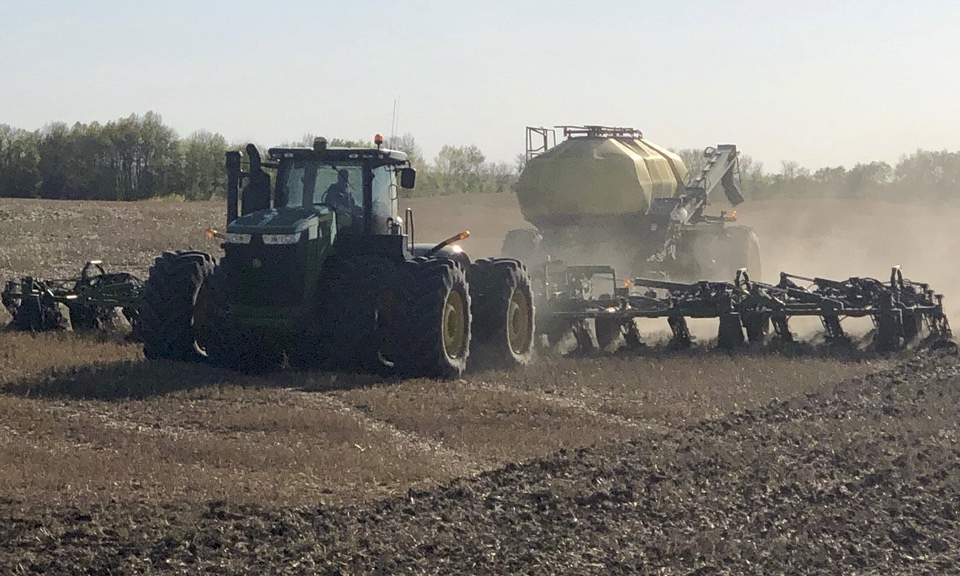
“I only had a look at preliminary results, but something was affecting the canola, so I need to have a better look at that,” he says. “I wasn’t worried about herbicide carryover because we were within the parameters, but I’m thinking there’s something there I need to have a closer look at.”
Semeniuk, who usually grows CPS wheat, peas, malt barley and canola (and sometimes hard red spring wheat and oats), says while it is great on one hand that commodity prices have been strong, on the flip side fuel prices, fertilizer prices, and repair and maintenance costs are all higher. And if there is a herbicide shortage, those prices will likely be going up too.
“Commodity prices are up, but input prices are at astronomical levels, so it’s still going to be a challenge,” he says. “I did buy some glyphosate early last fall. I bought as much as I was allowed to. It was the first time I ever was given a limit. But I’d say if people are able to find chemicals at a decent price buy them now because most likely those prices will be increasing too.”
Bill Nicholson
Shoal Lake, Man.

In southwest Manitoba, Bill Nicholson says he might have some room to reduce fertilizer application rates on his grain, oilseed and pulse crop farm near Shoal Lake as he prepares for another dry growing season.
Southwest Manitoba had a wet growing season cycle for about 10 to 15 years, he says, but now for the past couple of seasons it has been quite dry. He expects that dry cycle will continue.
“We were extremely dry here during the critical part of the 2021 growing season,” says Nicholson, who grows canola, hard red spring wheat, barley and peas. “Our yields were probably about a half to two-thirds of what they normally are. Our soil test last fall showed that nutrient reserves in the soil are a little higher than normal. Nitrogen reserves, in particular, are a bit higher and phosphorus was up a bit, although we are usually deficient in phosphates.”
His plan for 2022 is to reduce fertilizer application rates by about 10 per cent while targeting lower yields in what he expects will be another dry growing season. He’s hoping commodity prices remain fairly strong through 2022, but knows there is no guarantee. A lot will depend on the success of the U.S. soybean and grain crops.
“Hopefully we can save a few dollars, if possible, and produce a smaller crop, depending on growing conditions,” says Nicholson. After a bit of rain during harvest last fall, which will help get the 2022 crop started, he has already pre-sold some of the new crop.
After the 2021 harvest, Nicholson was able to get some of the anhydrous ammonia needed for the 2022 crop applied, but due to supply problems his application equipment sat idle in the field for several weeks. He says part of the problem was a shortage of trucks and drivers to deliver the product and a shortage of available supply of anhydrous ammonia. “With good fall conditions, a lot of farmers were looking to apply the product and I don’t think the suppliers were prepared to meet the increased demand,” he says. With part of the fall program complete, Nicholson will apply the rest of the anhydrous in the spring, prior to seeding.
And with “pretty well a fixed rotation” he doesn’t plan any major changes in crops grown or the acres for each. “I do my best to maintain a one-in-three-year rotation with canola, although it doesn’t always work out that way,” he says. He did grow soybeans for a few years but, now, with drier growing seasons the past couple of years, he has dropped them from the rotation.
Gerrid Gust
Davidson, Sask.

After a “super dry” 2021 growing season in his area of central Saskatchewan, Gerrid Gust is definitely in dryland farming mode for the 2022 cropping season.
He is planning to make use of residual soil fertility that’s available for the 2022 crop, and he is keeping yield targets realistic as he expects another dry year ahead.
“Even with record commodity prices, there is no point in shooting for the moon in terms of yield,” says Gust, who produces canola, lentils and hard red spring wheat at Davidson, which is roughly halfway between Regina and Saskatoon. “It would be nice to plan for a 50-bushel canola crop, but the reality of dryland farming is there may only be moisture for 35 bushels.”
With dry soil conditions heading into fall and winter, Gust is targeting realistic dryland yields for 2022. If moisture conditions do improve at seeding, he has a new spin spreader that can be used to top dress crop fertility to take advantage of improved growing conditions.
Based on soil test recommendations, with good carryover of nutrients in the soil from the 2021 growing season, Gust will be applying about 60 per cent of his usual fertilizer rate in 2022, again targeted at realistic dryland yields. “We have different granular blends that we bought last August ahead of the major fertilizer price increases,” he says. “It was expensive then but we bit the bullet and took delivery before prices got crazy.”
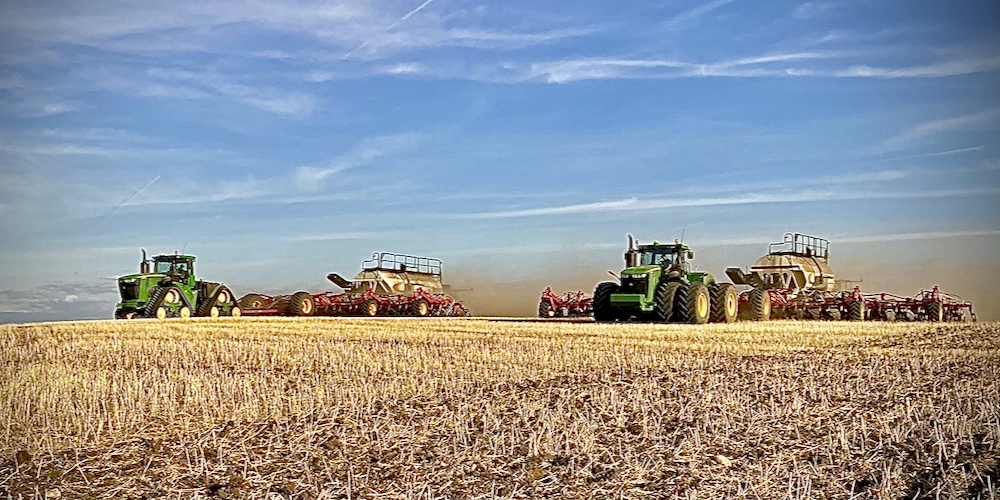
While nitrogen application rates may be about 60 per cent of normal, he’ll aim to apply “seed safe” levels of phosphate to help build soil reserves.
Another consequence of the 2021 dry growing conditions is Gust will not be seeding any canola on lentil stubble due to an increased risk of herbicide carryover from the pulse crop that could damage the canola. “This is a good area for wheat, so we plan to cut back on lentil acres a bit and grow more wheat,” says Gust.
And for 2022, he is also taking more of a wait-and-see approach with crop marketing. Usually by January he would have at least a portion of his crop pre-sold but this year he is “waiting until May or June before pre-selling or signing any delivery contracts,” he says. “I’ll wait until the crop is established before making any decisions.”
Jordan Lindgren
Norquay, Sask.

Although 2021 was the driest growing season Jordan Lindgren has experienced during his farming career, he’s heading into 2022 at least optimistic about achieving an average yield on his northeast Saskatchewan farm.
Lindgren, who farms with family members at Norquay, which is about an hour northeast of Yorkton, says crops will definitely need some timely rainfall during the 2022 growing season. His area did receive fall rains and a foot of heavy, wet snow at the end of 2021, which should provide moisture to get canola, wheat, oats and peas growing.
Lindgren made extra effort to conserve soil moisture last fall. It was the first time in many years nitrogen, in the form of anhydrous ammonia, wasn’t applied on the farm.
“We didn’t want to disturb the soil, so for the first time ever we broadcast applied SuperU granular fertilizer rather than knife in NH3,” he says. “We were concerned about moisture loss, so we floated on the SuperU, and there is no need for incorporation. So, our nitrogen has been applied.”
SuperU from Koch Fertilizer is a granular fertilizer treated with urease and nitrification inhibitor products that delay the release of nitrogen and protect it against all three forms of above- and below-ground nitrogen loss — volatilization, leaching and denitrification.
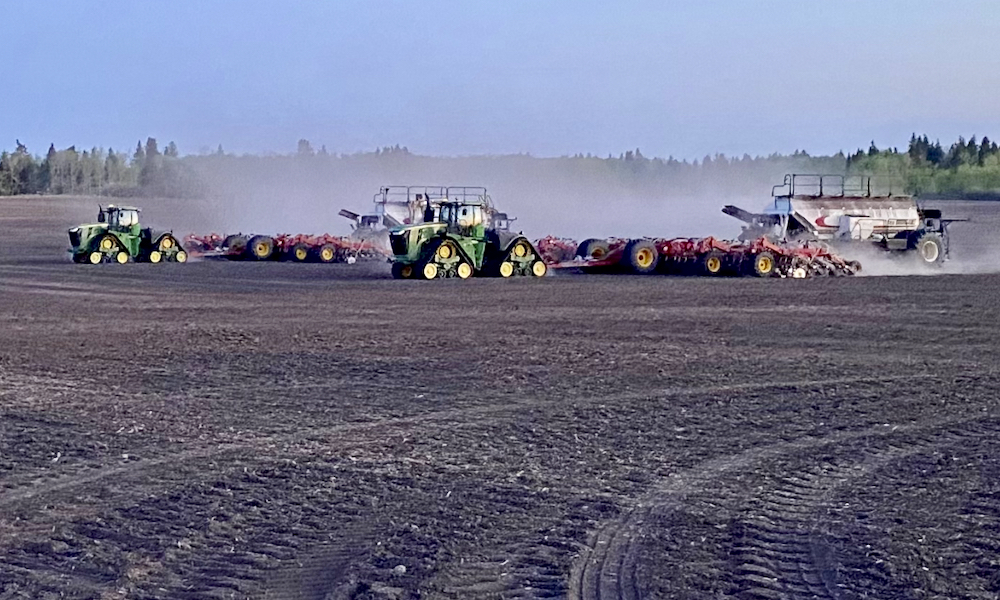
SuperU is a bit more expensive than other forms of nitrogen fertilizer, “but we bought it early and we bought it right,” says Lindgren, noting it is worth the investment if it improves nitrogen efficiency while conserving moisture.
Lindgren says soil tests showed the farm may have had some nutrient carryover from the 2021 crop, “but our yields were about two-thirds of normal and the crops did produce biomass, so there were no big reserves,” he says. “We pretty well fertilized for what we would consider an average crop under dry growing conditions.”
If growing conditions are surprisingly better next year, he can top dress with added fertility.
While nitrogen has already been broadcast applied in the fall, at seeding a dry blend of potash, phosphorus and sulphur will be split between the seed row and mid-row banding. “We have been applying the granular blend a bit heavier in recent years to build soil reserves, so this year we may pull back a bit on the rate, if possible. We’ll follow the soil test recommendation and base our decision on science.”
Lindgren isn’t planning any major change in crop rotation. About half of the acres will be seeded to canola while the other half will be split between wheat, oats and peas.
“I think 2022 is still going to be a fairly dry year, but I am optimistic we are in a good position for at least average yields,” says Lindgren. “We bought the fertilizer right, we have seed and chemical already on the farm, and with a bit of moisture in late fall, I have been forward pricing a portion of the crop as opportunities arise. It will be up to Mother Nature, but I think we at least have a shot at an average crop.”


